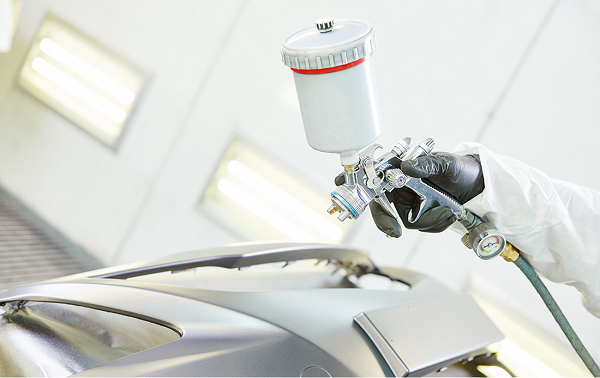The development status of conductive plastics and its application prospects are broad. The conductive plastic is a functional polymer material in which a resin and a conductive material are mixed and processed by a plastic processing method. Mainly used in electronics, integrated circuit packaging, electromagnetic shielding, and other fields. Conductive plastics have not only developed rapidly in antistatic additives, computer anti-electromagnetic screens and smart windows, but also have broad application prospects in the fields of light-emitting diodes, solar cells, mobile phones, micro-television screens and even life science research. In addition, the combination of conductive plastics and nanotechnology will also promote the rapid development of molecular electronics. In the future, humans can not only greatly improve the computing speed of computers, but also reduce the size of computers. Therefore, it is predicted that future laptops can be loaded into watches. The main use of conductive plastics is firstly used in the field of electronics and electrical appliances as anti-static turnover boxes, IC and LCD trays, IC packages, wafer carriers, film bags, etc. used in the production of precision electronic components such as integrated circuits, wafers, and sensor sheaths. Secondly, the outer casing and structural parts of explosion-proof products, such as: outer casings and structural parts of electrical products used in coal mines, oil tankers, oil fields, dust and combustible gas; and semi-conductive shielding materials used in medium and high voltage cables; In addition, it is an EMI shielding enclosure for electrical products in the fields of telecommunications, computers, automation systems, industrial electronics, consumer electronics, and automotive electronics.
At present, the development of conductive plastics at home and abroad, first focus on the antistatic agent filling type. The advantage of the antistatic agent-filled product is that the coloring of the product is not limited, and the low molecular type antistatic agent has little effect on the product performance, and the surface resistivity thereof is 1010-1013 Ω. However, the electrical properties of low molecular antistatic agent-filled products will gradually lose over time. The main development trend in foreign countries is to develop and produce polymer antistatic agents. Polymer antistatic agents can also be called permanent antistatic agents. It will not be washed like water or after long-term use like low molecular antistatic agents. It loses its conductivity. The main types of polymer antistatic agents are: polyether type, quaternary ammonium salt type, sulfonic acid type, acid graft copolymer, ionic type. The amount of the polymeric antistatic agent added is 5 to 15 times that of the low molecular type antistatic agent, and the compatibility with the resin is also considered to select a suitable compatibilizer, which is subject to cost constraints. Certain restrictions.
Followed by the carbon-filled type, this series of fillers are mainly conductive carbon black, graphite and carbon fiber, and the volume resistivity of the finished product is 102-109 Ω•cm. Among them, carbon black filling is the mainstream, and carbon black filled conductive polymers are widely used because conductive carbon black is relatively inexpensive. The second reason is that carbon black can have a large choice according to different conductivity requirements. The resistance of its finished products can vary within a wide range between 102-109 Ω. The third is that the conductivity is durable and stable. Therefore, it is an ideal antistatic material. However, its finished products are limited to black, and have a great influence on material properties, and need to be modified.
Metal-filled type is another development direction. This type of conductive plastic is mainly used in electromagnetic wave shielding applications. In recent years, due to the development of integrated circuits and large-scale integrated circuit technology, digital electronic machines have been developed from industrial to civilian products. In order to improve the processing capability, the electronic circuits and components used are increasingly integrated into miniaturization and high speed, and the signal level thereof is reduced, which makes electromagnetic waves intruding from the outside close to the control signals. In addition, the electronic device also radiates electromagnetic waves outward, so it is easy to cause malfunction, image and sound interference of the electronic device. In the 1980s, most of the housings of electronic machines used plastic materials instead of metal. This is because plastic as a housing has the advantages of light weight, high strength, corrosion resistance, easy processing, high production efficiency, and low total cost. But plastic is an insulator that is completely transparent to electromagnetic waves. Therefore, the electromagnetic shielding ability of the plastic casing has become a very urgent subject to be studied.
In recent years, the conductive plastics method has aroused people's interest. There are many reports on this aspect. This is because the conductive plastic method has three significant advantages, no need for secondary processing; shielding and molding products are completed at one time (labor and economy); It is safe and reliable during long-term use (such as vibration and humid heat environment), and does not cause peeling and peeling off like surface method. The replacement of metallic materials by polymer materials is a trend in the field of materials science in the future. As a result, the market demand for conductive polymers is increasing, and the application fields are gradually expanding, which inevitably puts higher demands on conductive polymers. For structural conductive polymers, in order to further practical use, it is necessary to solve the following main problems: lack of stability, oxygen atoms in conductive polymers are extremely unstable to water, which is a hindrance The biggest problem of its practical use; the dopants are mostly toxic, such as AsF5, I2, Br2, etc.; the molding is difficult, the conjugated structure in the main chain of the conductive polymer makes the molecular chain stiff, insoluble and insoluble, thus freely forming Processing is difficult; economical is poor, its price is higher than metal and ordinary plastic, it is difficult to put it into practical use.

 Company Profile
Changzhou NaO Technology Co.,Ltd. is located in the national high-tech innovation park - Changzhou Science and Education City, Jiangsu Province, and is a high-tech enterprise in Jiangsu Province.
Company Profile
Changzhou NaO Technology Co.,Ltd. is located in the national high-tech innovation park - Changzhou Science and Education City, Jiangsu Province, and is a high-tech enterprise in Jiangsu Province.
 Qualification honor
Our company has undertaken more than 10 national, provincial and municipal science and technology projects and applied for more than 80 invention patents. It is a high-tech enterprise in Jiangsu Province and a technological innovation enterprise in Jiangsu Province.
Qualification honor
Our company has undertaken more than 10 national, provincial and municipal science and technology projects and applied for more than 80 invention patents. It is a high-tech enterprise in Jiangsu Province and a technological innovation enterprise in Jiangsu Province.
 Company news
Company news, please click to enter。
Company news
Company news, please click to enter。
 Industry news
For the latest news in the industry, please click to enter。
Industry news
For the latest news in the industry, please click to enter。
 Message
You are welcome to browse our website. If you need help, please call our contact number, or click to enter the message platform to leave a message, we will reply you in the first time.
Message
You are welcome to browse our website. If you need help, please call our contact number, or click to enter the message platform to leave a message, we will reply you in the first time.
 Contact information
Contact: Landline: 0519-83277346
Mr. Yao: 13813572798
Mr. Wang: 18861101169
Contact information
Contact: Landline: 0519-83277346
Mr. Yao: 13813572798
Mr. Wang: 18861101169


